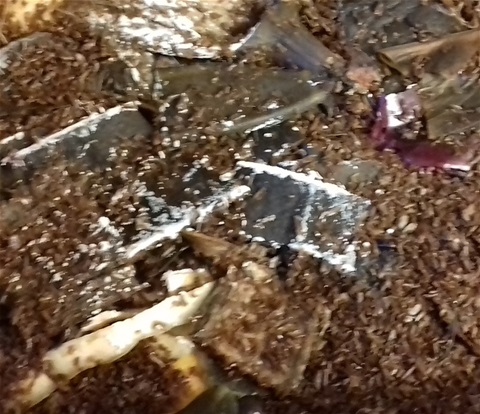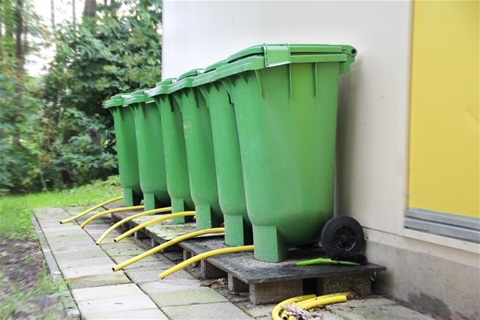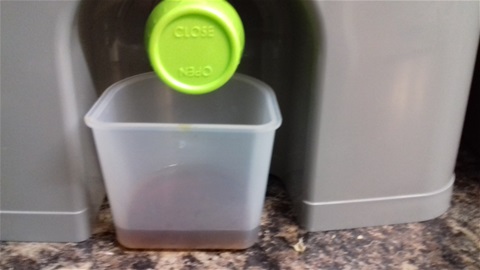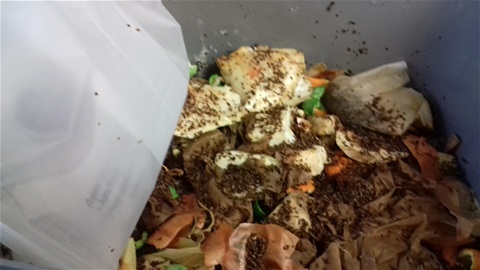Bokashi: White mould
Bokashi Composting Food
The normal advice is that cooked food should not be composted in a conventional cold compos bin or heap as it may attract rats. While there are bins available for the hot composting of cooked food they tend to be expensive so in order to discourage home composters sending cooked food waste to landfill I have been photographing the use of a Bokashi bin as a means of treating the food so as to make it suitable for cold composting. This system can also be used where the Council has a kerbside food waste collection, but the householder does not want to store the food for a week between collections.
I started recording the use of a commercially available Bokashi bin to turn waste food into fermented pre-compost suitable for adding to a conventional compost bin or burying in the garden just before Christmas. The bin was filled, the lid secured to prevent access of air and put a side for the fermentation process to start on the 5th January. It would normally be left for two or three weeks and todays photo show the start of white fungal growth on the surface of the fermenting material. The growth of white mould is acceptable. However, a green or black fungal growth indicates that things have gone wrong. As on this occasion I want further photographs of the mould developing the bin was quickly resealed and will be left for a further few days.
More information can be seen on previous blogs or at http://www.carryoncomposting.com/416920212



